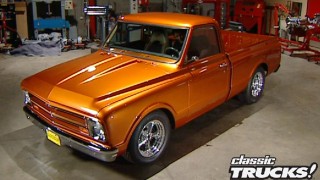
Hairy Hauler Gets Chopped
We continue our work on Project Hairy Hauler by chopping three inches from the top of our 34 International pickup to achieve that classic sixties Gasser look.
Season 2
Episode 10
Hosts: Stacey David, Mel Fair
First Air Date: July 20, 2018
Duration: 21 minutes 16 seconds















